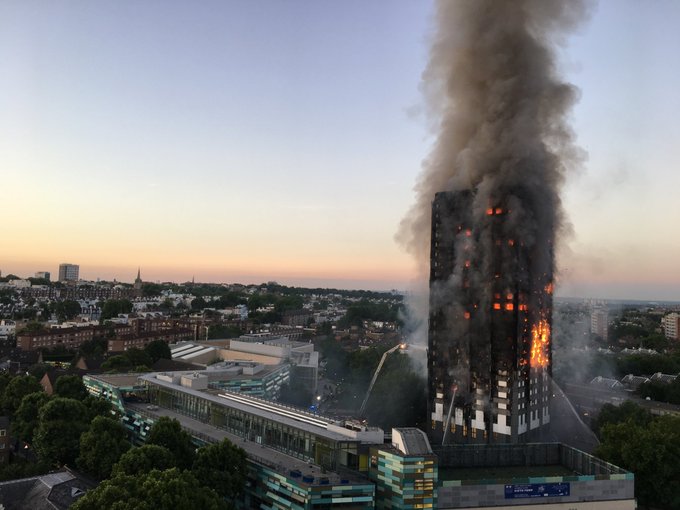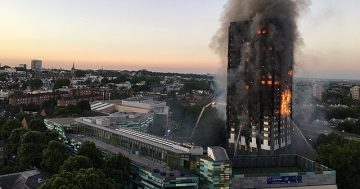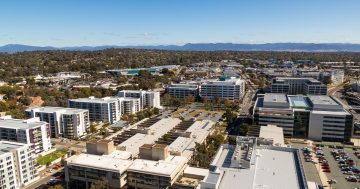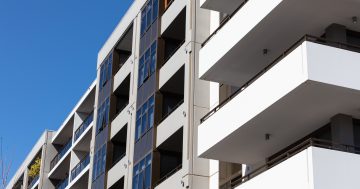
Dozens of people died when flammable cladding exacerbated the Grenfell Tower fire in 2017. Photo: Twitter (@Natalie_Oxford).
The ACT Government will spend $19 million on a program to remove potentially combustible cladding on government buildings, and just under $2.5 million for a voluntary scheme for eligible private buildings over the next three years.
The funds will run until 2022-23 and follow a cladding audit that found 70 sites had some form of potentially combustible cladding, including a number of ACT public schools. However the Government said the extensive audit of ACT Government-owned buildings revealed all are safe for people to continue to occupy.
“Through the Government’s cladding audit response team, we have identified a small number of publicly owned buildings that require further examination and potential remediation,” a Government spokesperson told Region Media.
“This work will be carried out by highly qualified specialists and funding has been provisioned to ensure the cost of any potential work can be covered from now and into the future.”
An initial plan will be developed to remove the cladding on Government buildings and will require building and façade engineers, as well as other specialists, to provide advice on what needs to be done and if any extra costs will be involved.
Meanwhile, the ACT Government will provide concessional loans to owners of private buildings to help them test and assess whether cladding is potentially combustible.
The announcement was welcomed by Vantage Strata, who said the uncertainty around potentially unsafe and combustible cladding in construction had undermined the ability to secure building insurance on some ACT apartments.
“While we suspect few of the strata buildings in Canberra will actually be considered high risk, the main benefit of this audit in the short term will be the ability for owners to finally secure appropriate building insurance,” Vantage Strata Managing Director Chris Miller said.
“Before today’s [27 August] announcement, an increasing number of buildings were looking like they would be uninsured and non-compliant.”
A further $1.55 million for more specialist engineering and building surveying staff and just under $8 million for more public sector building certifiers has also been set aside in the budget over the next four financial years.
Cladding materials consisting of either aluminium composite panels or expanded polystyrene are potentially combustible and can cause a fire to spread more quickly, which the world saw in the 2017 Grenfell tower fire, which killed 72 people.
Six months later, $1.625 million was spent to remove combustible aluminium cladding used on the Centenary Hospital for Women and Children.
The type of cladding, how it has been installed, where it is located on the building, the height and size of the building and existing fire safety measures all contribute to the risk posed.
Cladding is also a major issue facing Sydney after owners of 130 buildings were told to replace flammable cladding or reveal more details about the materials.
There are fears that individual apartment owners will be left to foot bills of tens of thousands of dollars.
For more information visit www.planning.act.gov.au.


















